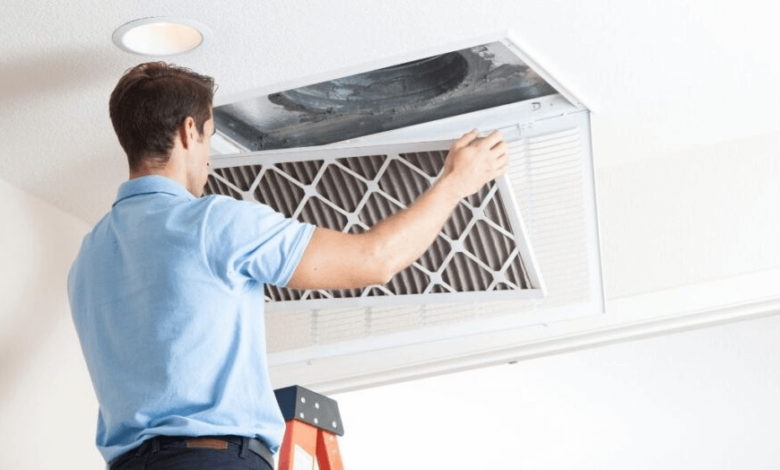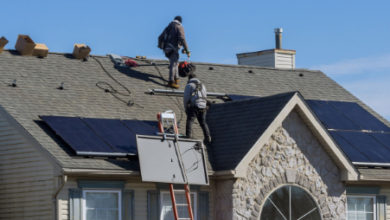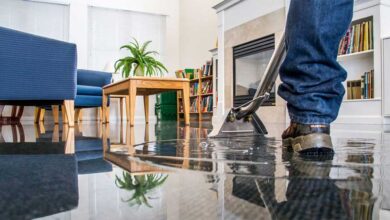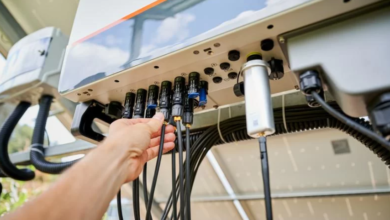What Leads to Poor Airflow Through the Vents?

Dust, debris, or mold buildup within the system can lead to poor airflow through the vents. Duct leaks or closed vents may also reduce performance. Homeowners can also consider options such as ductless mini-split installation by Beltway Air Conditioning & Heating to improve efficiency and airflow. Regular cleaning and timely filter replacement help prevent these issues. Understanding the causes allows homeowners to maintain smooth system operation and preserve healthy indoor air quality, as will be explored further in the following sections.
What Causes Poor Airflow?
Various causes lead to poor HVAC airflow, which may be a problem in the system or in the living space. These issues can be detected, which will become the first step to the correct circulation. Typical offenders are dirty air filters, air blockage, leaking ducts, faulty parts, and improperly engineered systems.
Air Filters
Among the most common causes are dirty air filters. Dust, dirt, and allergens are filtered, but after a while, they clog the filter, thus limiting the airflow. Filter checks are done monthly, especially in those months when the seasons are at their peak, such as summer and winter.
Filtration and application of filters of the correct MERV rating will enhance the quality and efficiency of the air. Neglect of the filter maintenance not only strains the HVAC system but also reduces its life span.
See also: How to Use a Paint Calculator to Save Time and Money on Home Remodeling
Vents & Registers
Vents and registers that have been blocked or closed are also disruptive to airflow. Vents may be obstructed by furniture, curtains, or rugs, and dust on the grilles of the vents can form a barrier.
Misalignments or damage are checked and cleaned regularly to ensure that air flows freely. Trying to seal too many vents in an effort to save energy will backfire, leading to pressure imbalances and poor overall performance.
Ductwork System
Duct leaks/disconnections result in substantial air loss, especially in unconditioned areas. Ductwork should be well insulated.
Systems with too many bends or sharp angles impede airflow, and debris built up inside ducts exacerbates the issue. That’s where professional cleanings and inspections come in!
HVAC Unit
Airflow can also be affected by mechanical failures. The blower motor or fan assembly is faulty, which limits circulation, and an outdoor condenser blocked by leaves or dirt cannot work effectively.
A decrease in refrigerant level can result in frozen coils, and these obstruct airflow completely. These problems are prevented with the help of routine maintenance, and the system will last longer.
System Design
The HVAC system must be of the appropriate size to serve the space. Big and small systems are inefficient and produce unequal airflow.
Circulation problems are only made worse by poor ductwork or ducting design of returns. Checking it out by professionals aids in identifying these design flaws.
The Unseen Culprit: System Imbalance
In addition to crystal-clear reasons, airflow issues are usually due to the disequilibrium in the system. The presence of poor distribution, pressure, and insufficient return air vents enhances uneven comfort and low efficiency.
Air Pressure
A consistent airflow requires an equal air pressure. Shutting excessive registers or doors puts the system out of balance, and it will have to work harder to cause uneven heating or cooling. To give an example, when there is a closed bedroom door, this traps the air and creates pressure differences that impact the whole house.
Unbalancing of the pressure is a common indicator of duct leakages. Leakage of ducts causes loss of conditioned air, and this decreases efficiency. Homeowners can mitigate these trouble spots by installing pressure gauges, which would assist in regaining the balance.
A proper balance between supply and return air is equally important. Without sufficient return air, the system cannot stabilize pressure. This forces the furnace to pull air through the path of least resistance—often the ductwork—causing premature wear.
Return Vents
Make sure they have return vents that blow the air back into the system, but they are often not thought about. When there are hindrances to the flow of air, such as the presence of furniture or decor, then these vents cannot work effectively. An example of this is a sofa placed against a return vent that may interfere with the circulation of air, leading to stuffy rooms.
Houses with too few return vents can have weak airflow in some rooms. Supplementing with a couple of additional vents in these underserved spaces will fix this.
Cleaning vent grilles regularly prevents dust buildup–something seriously inhibiting airflow. Structural problems, such as vents that are the wrong size or in the wrong place, should be examined and repaired to maximize efficiency.
Room Layout
The layout of a room significantly affects airflow. Furniture positioned over supply vents or registers blocks air distribution, especially in smaller rooms. Rearranging furniture can improve circulation.
Vent placement also matters. Rooms that are far away in relation to HVAC unit tend to get less air supply. To an extent, ceiling fans can be used to redistribute conditioned air to make the whole home comfortable.
How to Diagnose Airflow Issues
Primarily, the HVAC airflow issues diagnosis starts with the identification and use of crude methods to locate potential perpetrators. How to identify the bad HVAC airflow problems with heating or cooling efficiency with systematic inspection and testing is a significant technique to track down the culprit.
Visual Inspection
Visual inspection of the HVAC system is the first step. Problems can include torn ducting, unconnected sections, or obvious obstructions. Check the outside condenser and remove any leaves, sand, or debris that could be a hindrance to airflow, also.
Air filters are another frequent source of issues. Dirty filters reduce airflow and create inconsistent temperatures. Replacing them when necessary often resolves these problems. Even basic checks like these can reveal physical causes of poor airflow.
Feel Test
Hand testing of airflow offers informative information. Coming close to vents in various rooms can help point out the differences in the intensity of airflow. Difficulty in the airflow in one room and not in all may indicate a ductal blockage or a local issue.
Sensitivity to hot or cold spots is another way to diagnose imbalances. Rooms that do not stay at the same temperature usually indicate problems with the distribution of airflow or system pressure. Such an approach is especially successful in problem detection without special equipment.
Sound Check
Problematic airflow of the HVAC is detectable by listening to irregular sounds.
- Noises of rattling may indicate slack duct connections, and whistling may be air leaks.
- Focus on the blower motor. Mechanical failure may also be represented by a humming or grinding sound and has a direct influence on airflow.
- Periodic, odd sounds usually signify obstructions or limitations that are to be serviced.
Ensuring Clear Vents for Lasting Comfort
The first step of poor airflow resolution is problem identification. Among the common causes are clogged filters, dirty ducts, and imbalances in the system. The cleaning of vents and replacement of filters during routine maintenance is likely to increase airflow substantially. In cases where such measures turn out to be too little, professional help makes sure the background problems are solved.
Comfort is not all about proper airflow. It maximizes energy utilization, reduces utility costs, and increases the lifecycle of the system. Maintenance minimizes stress, time, and long-term costs.
The best approach is prevention. It is important to keep the system clean, plan regular checkups, and solve small inconveniences in order to sustain year-long comfort. Professional servicing ensures a balance of air flow and efficient system performance when in doubt.





